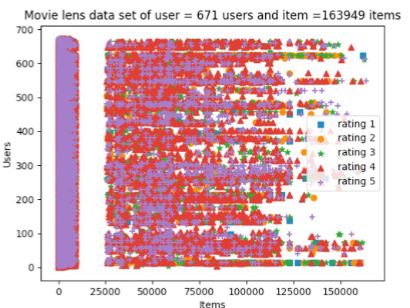Top-k Recommended Items: Applying Clustering Technique for Recommendation
Main Article Content
Abstract
This research proposes the Top-k Items Recommendation System which uses clustering techniques based on memory-based collaborative filtering technique. Currently, data sparsity and quantity of system are problems in memory-based collaborative filtering technique. We offer recommend or show some items set for user’s preference. In this research, we propose methods for recommended items set to user preference on data sparsity, movie lens datasets (1M) consisting of 671 users and 163,949 product items were used by determining the preference level between 1 and 5 and user satisfaction levels of all 98,903 items being build and test the models. Methods was divided into three parts included 1) Simple Agent Module 2) Neighbor Filtering and 3) Prediction and Recommend. Simple clustering was used to create a system to provide suggestions for sparsity data. Datasets obtained from clustering represented the sample agent of dataset to being create the recommendation system. Datasets were divided into two categories, 1) Traditional Data (TD) and 2) Statistic Data (SD), and each dataset clustered by k-means clustering. The experimental results demonstrated that the number of item types in the system were recommended in the TD and Euclidean (DIS). DIS was used to find the nearest value in TD for the item list recommendation to active users in the system with the a lot of number choice of recommendation system.
Article Details
References
[2] H. Ma, I. King, and M. R. Lyu, “Effective Missing Data Prediction for Collaborative Filtering,” in Proceedings of the 30th Annual International ACM SIGIR Conference on Research and Development in Information Retrieval, New York, NY, USA, 2007, pp. 39–46.
[3] X. Su and T. M. Khoshgoftaar, “A Survey of Collaborative Filtering Techniques,” Adv Artif Intell, vol. 2009, pp. 4:2–4:2, Jan. 2009.
[4] J. Lu, D. Wu, M. Mao, W. Wang, and G. Zhang, “Recommender system application developments: A survey,” Decis. Support Syst., vol. 74, pp. 12–32, Jun. 2015.
[5] H. J. Ahn, “A new similarity measure for collaborative filtering to alleviate the new user cold-starting problem,” Inf. Sci., vol. 178, no. 1, pp. 37–51, Jan. 2008.
[6] E. Q. da Silva, C. G. Camilo-Junior, L. M. L. Pascoal, and T. C. Rosa, “An evolutionary approach for combining results of recommender systems techniques based on collaborative filtering,” Expert Syst. Appl., vol. 53, pp. 204–218, Jul. 2016.
[7] Shimodaira, Hiroshi, “Similarity and recommender system,” Sch. Inform. Univ. Eidenburgh 21, no. 2014.
[8] Thanaphon Pukseng and Sunantha Sodsee, “Applying Expert Concept for Recommendation System” Journal of Science and Technology, vol. 25, no. 2, pp. 361–375, 2017.
[9] Tatiya, R. V. and P. A. S. Vaidya, “A Survey of Recommendation Algorithms,” IOSR J. Comput. Eng., vol. 16(6), pp. 16–19, 2014.
[10] J. Niu, L. Wang, X. Liu, and S. Yu, “FUIR: Fusing user and item information to deal with data sparsity by using side information in recommendation systems,” J. Netw. Comput. Appl., vol. 70, pp. 41–50, Jul. 2016.
[11] V. Strnadova-Neeley, A. Buluc, J. R. Gilbert, L. Oliker, and W. Ouyang, “LiRa: A New Likelihood-Based Similarity Score for Collaborative Filtering,” ArXiv160808646 Cs, Aug. 2016.
[12] B. K. Patra, R. Launonen, V. Ollikainen, and S. Nandi, “A new similarity measure using Bhattacharyya coefficient for collaborative filtering in sparse data,” Knowledge.-Based Syst., vol. 82, pp. 163–177, Jul. 2015.
[13] R. Xu and D. Wunsch, “Survey of clustering algorithms,” IEEE Trans. Neural Netw., vol. 16, no. 3, pp. 645–678, May 2005.
[14] W. Niyagas, A. Srivihok, and S. Kitisin, “Clustering e-Banking Customer using Data Mining and Marketing Segmentation,” ECTI Trans. Comput. Inf. Technol. ECTI-CIT, vol. 2, no. 1, pp. 63–69, 2006.
[15] A. K. Jain, “Data clustering: 50 years beyond K-means,” Pattern Recognit. Lett., vol. 31, no. 8, pp. 651–666, Jun. 2010.
[16] D. Sculley, “Web-scale K-means Clustering,” in Proceedings of the 19th International Conference on World Wide Web, New York, NY, USA, 2010, pp. 1177–1178.
[17] I. S. Dhillon and D. S. Modha, “Concept Decompositions for Large Sparse Text Data Using Clustering,” Mach. Learn., vol. 42, no. 1–2, pp. 143–175, Jan. 2001.
[18] C. Ordonez, “Clustering Binary Data Streams with K-means,” in Proceedings of the 8th ACM SIGMOD Workshop on Research Issues in Data Mining and Knowledge Discovery, New York, NY, USA, 2003, pp. 12–19.
[19] J. L. Herlocker, J. A. Konstan, L. G. Terveen, and J. T. Riedl, “Evaluating Collaborative Filtering Recommender Systems,” ACM Trans Inf Syst, vol. 22, no. 1, pp. 5–53, Jan. 2004.


